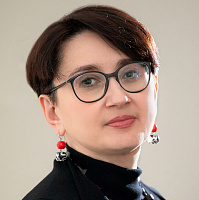“Throughout our work, the team pays great attention to interaction with partners, beneficiaries, and fellows: it is essential to understand what experience they get as a result of cooperation with us. The Review of the Center for Philanthropy Development, which we recently published, suggests looking at partnership and interaction from a new angle and analyzing how this subject manifests itself through the public face of each organization, through its website. Naturally, we were interested in how effectively our values and practices in terms of working with grantees are presented on our website. The time was not chosen by chance: the subject of partnership with grantees was highlighted as one of the key priorities in the Foundation’s strategic vision, adopted in 2016. Moreover, there was another significant change in 2020: the number of partners and beneficiaries has dramatically increased. This was due to both the emergence of new anti-crisis competitions and the extension of grants. During the year, we took various measures to make our goals, objectives and tools more understandable.
This case is an attempt to see through the eyes of experts to what extent we managed to reflect our understanding of partnership on the website and identify areas for development. We turned to independent experts and received a valuable perspective, which, I am sure, will allow us to make our interaction with grantees even more understandable, productive, professional and trustworthy. Now we are ready to share the study results, as we are sure that they can be useful not only to us, but also to other organizations working with beneficiaries.
Obviously, partnerships should also have an external presentation, so we changed the design of our site a year and a half ago, setting ourselves the task of making information more useful, understandable and accessible to our potential beneficiaries. And it is a good time to understand how we succeeded.
Our task is to ensure that the relationships that we develop with beneficiaries always help them in their work, and their work helps us to become better. The survey was anonymous, and our goal was to identify areas for development to understand how our activities are perceived from the outside. It was clear that there are areas for development. Partially they were caused by objective factors: a sharp increase in beneficiaries in 2020. But this survey also demonstrated that it is necessary to articulate correctly expectations from the interaction.
We achieved the stage when we need to develop our own standards, so that a person who approaches the Foundation understands immediately what he can expect. Another suggestion of the experts within the survey is to use social networks and especially telegram channels more actively to explain the competitions’ procedures and our activities. This coincided with our self-assessment and our ideas on what tools we decided to develop.
Such simultaneous movement from both sides allows us to hope that we really understand the beneficiaries’ needs. Definitely, we have room for improvement, but I hope that subsequent surveys, which we will now conduct regularly, will show that positive changes have taken place. We have high performance standards and a professional team that will enable us to be ready for any challenge.”
